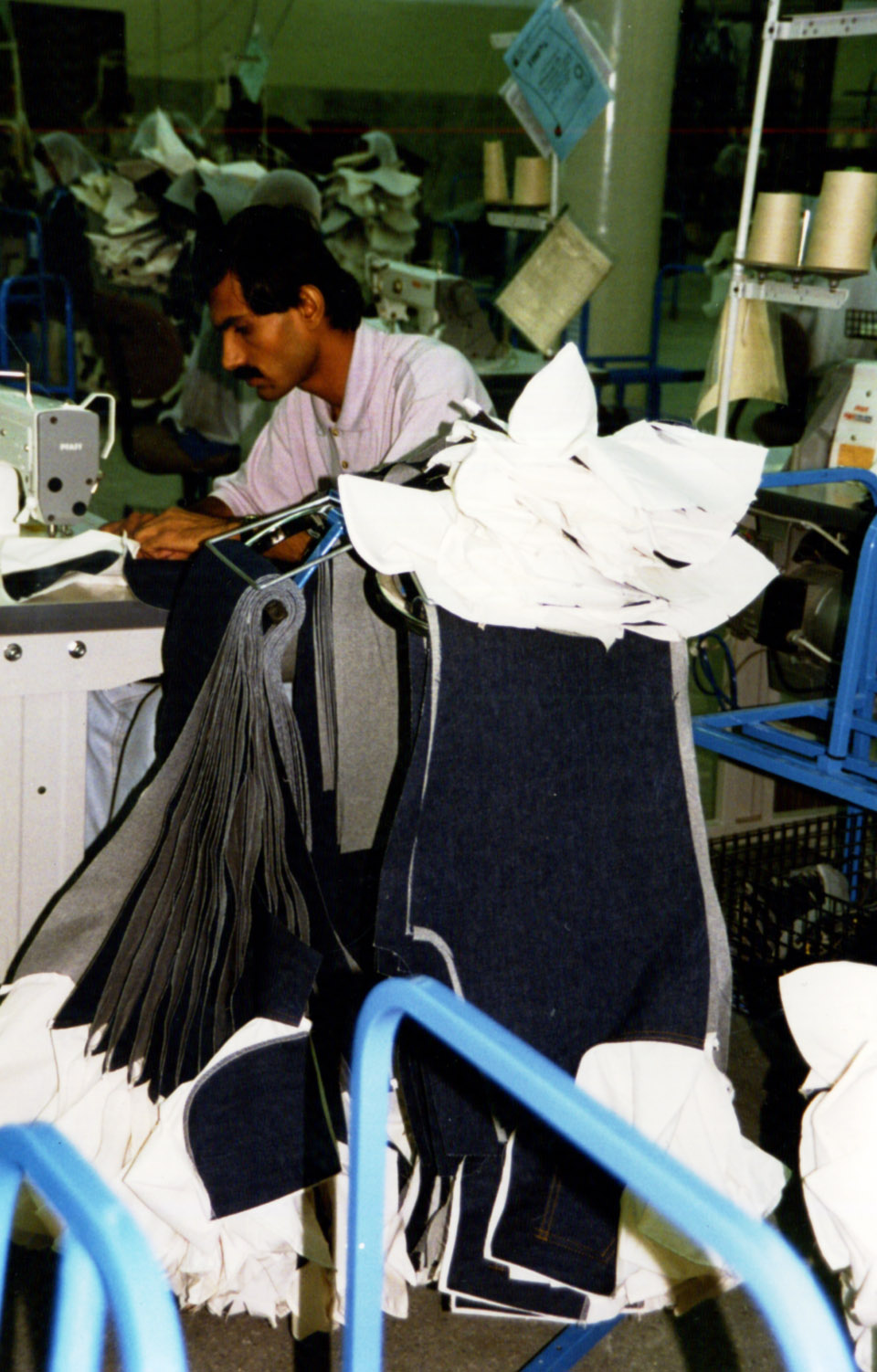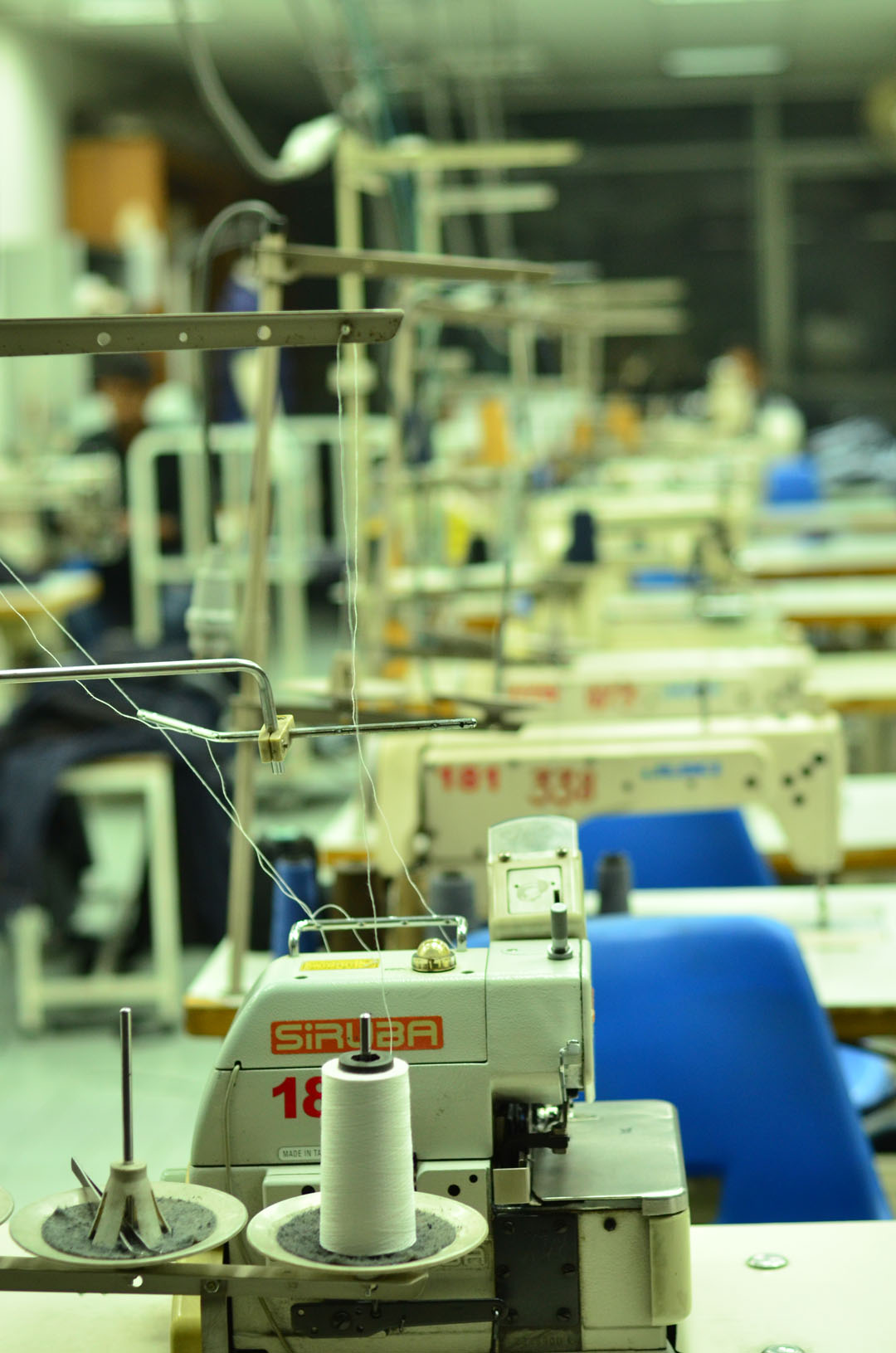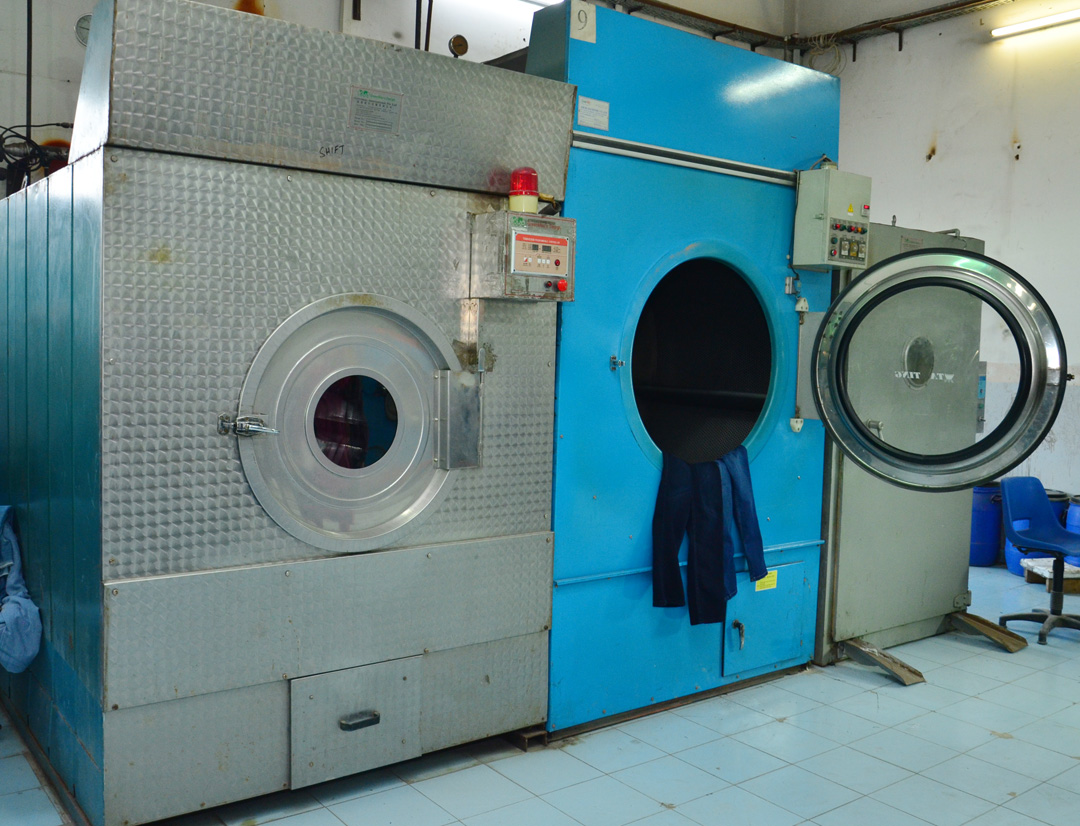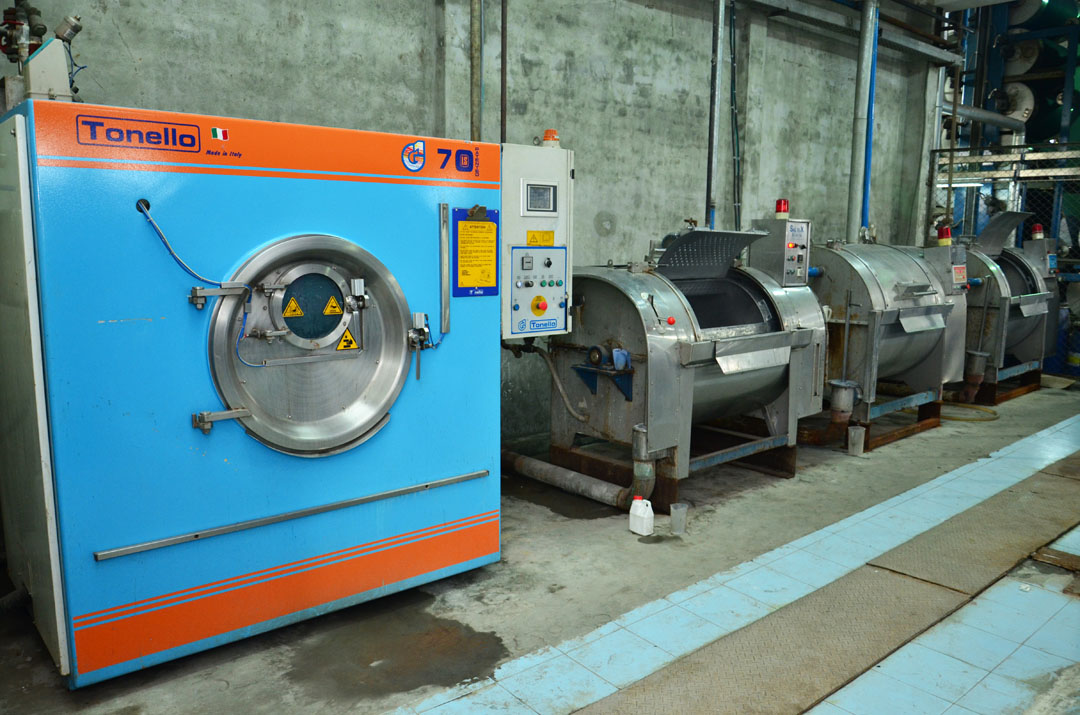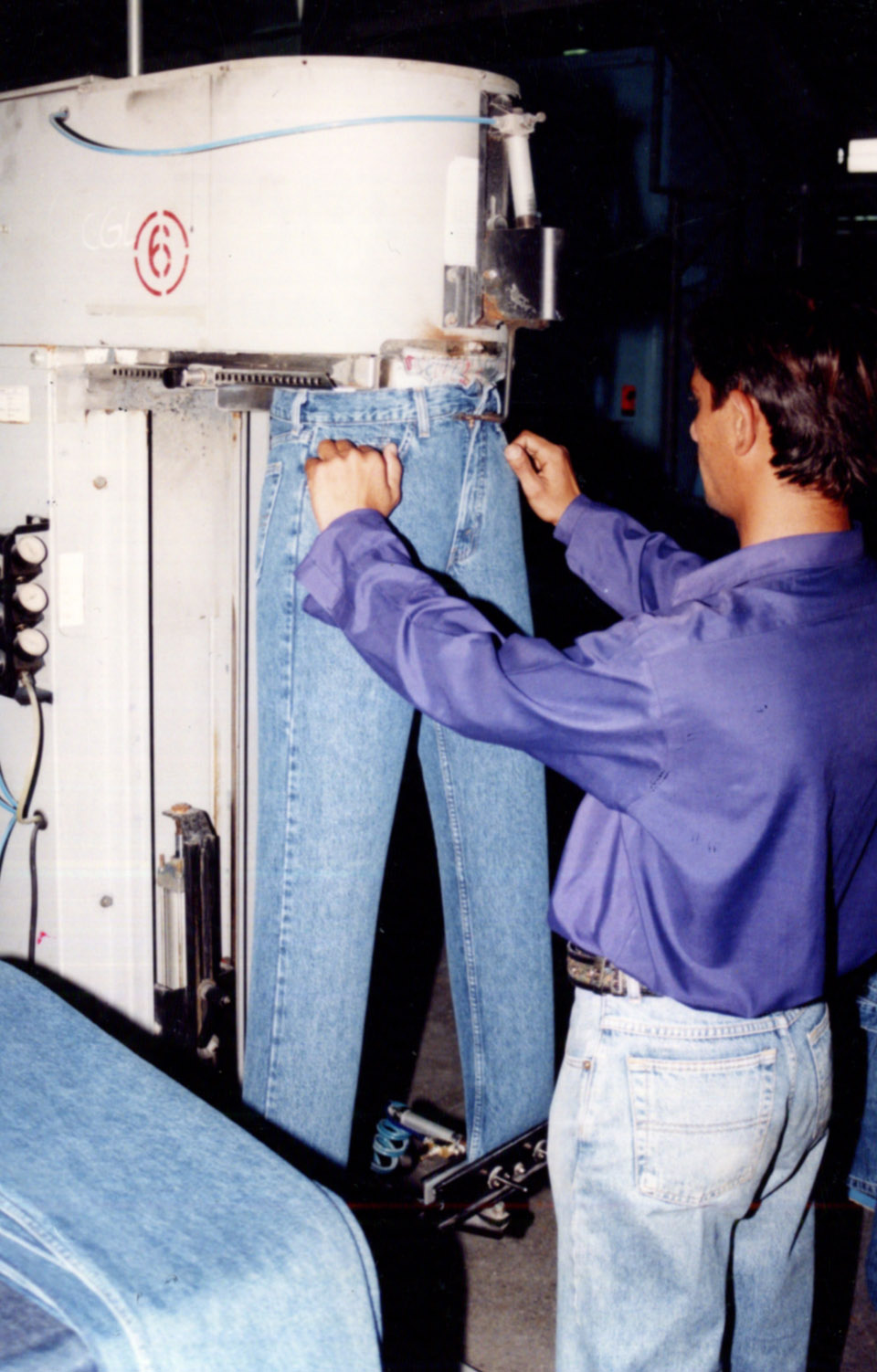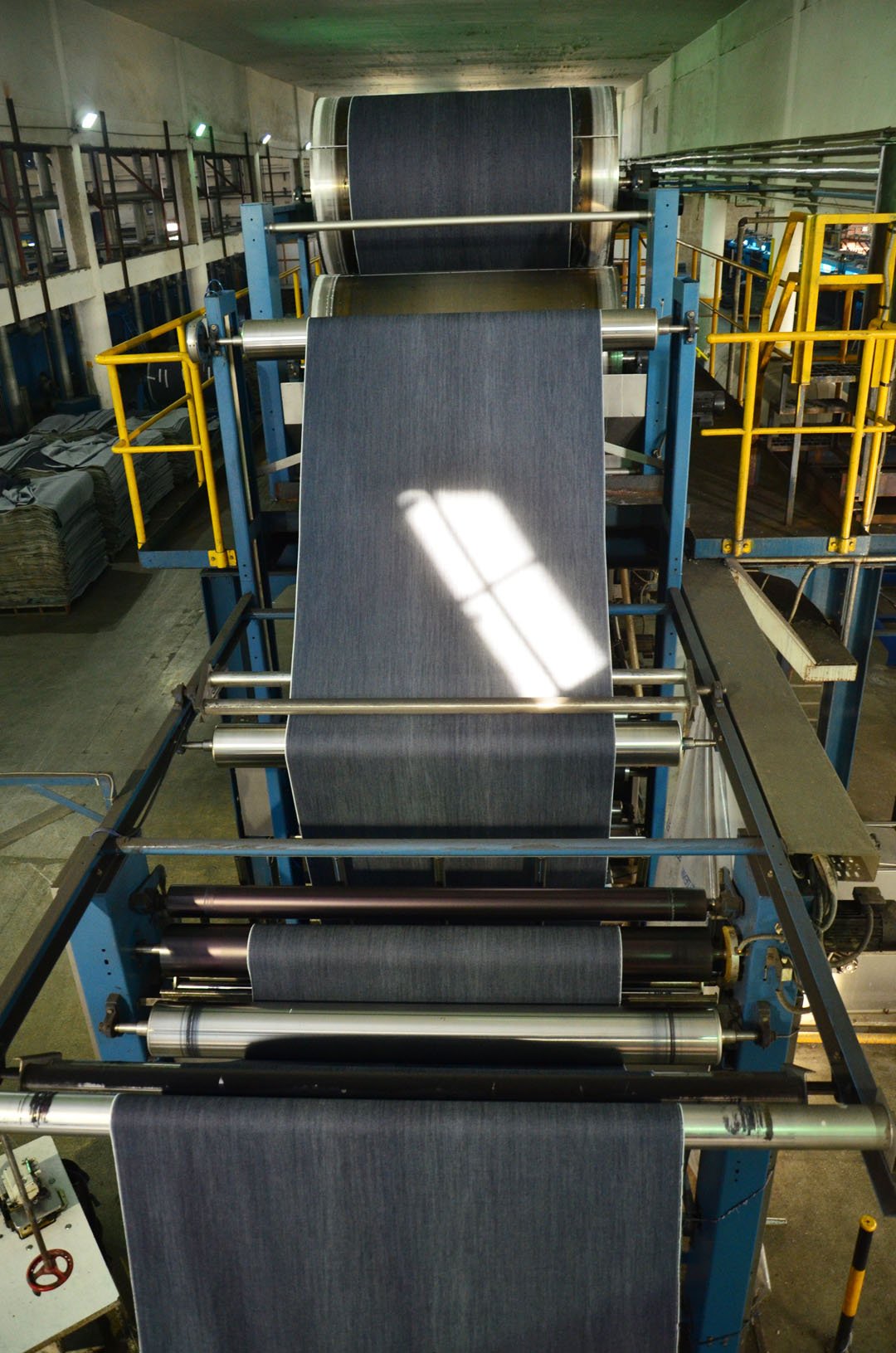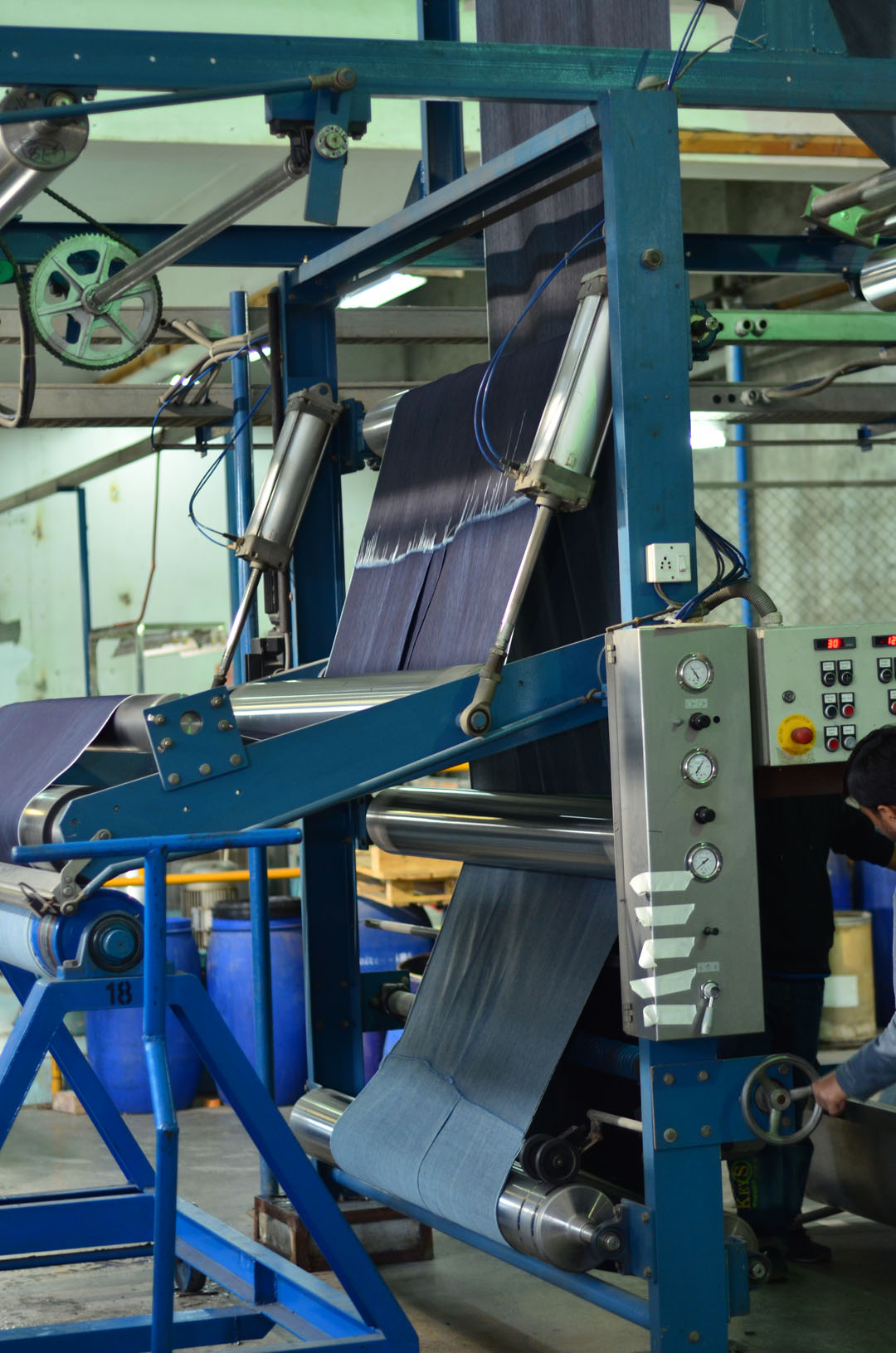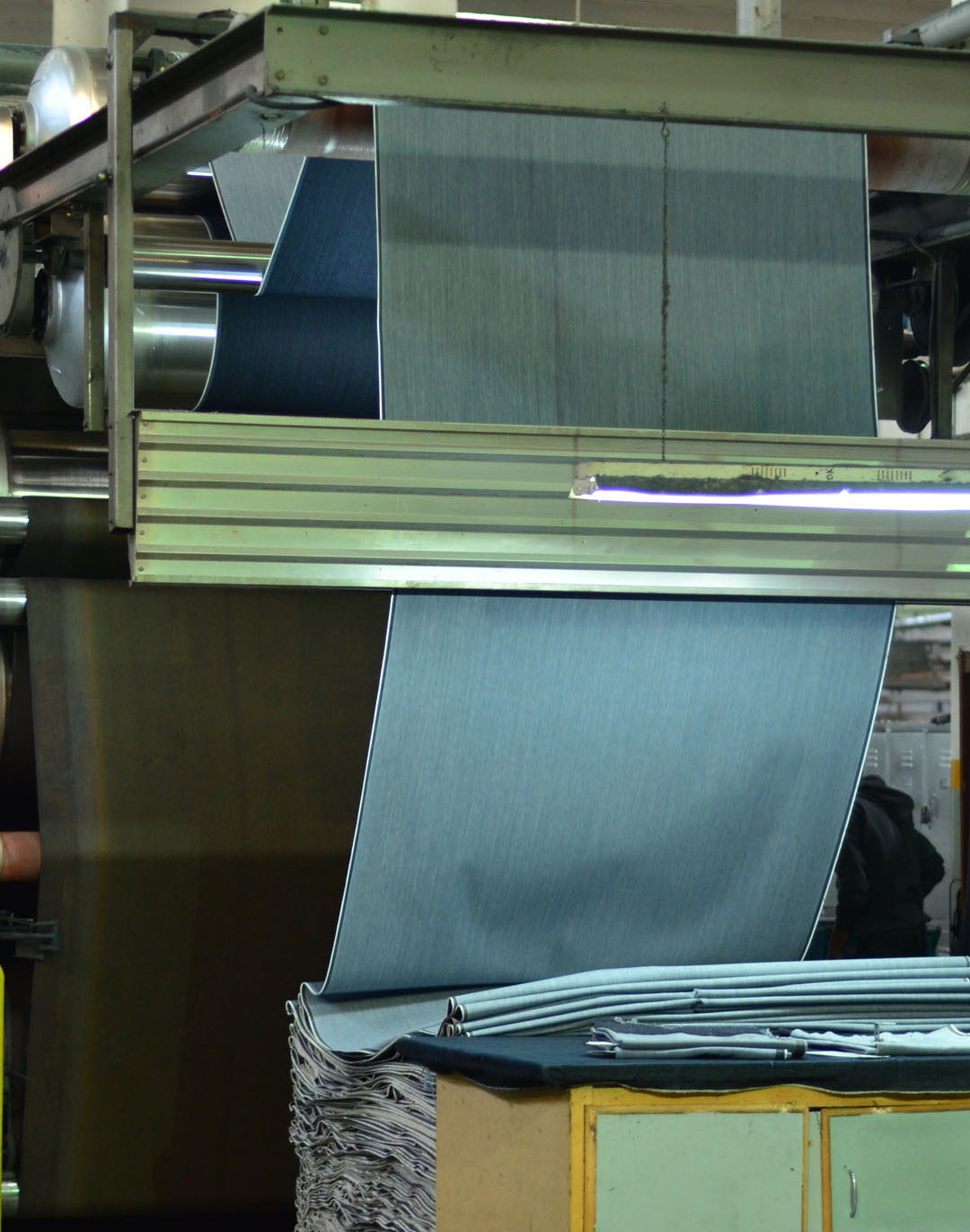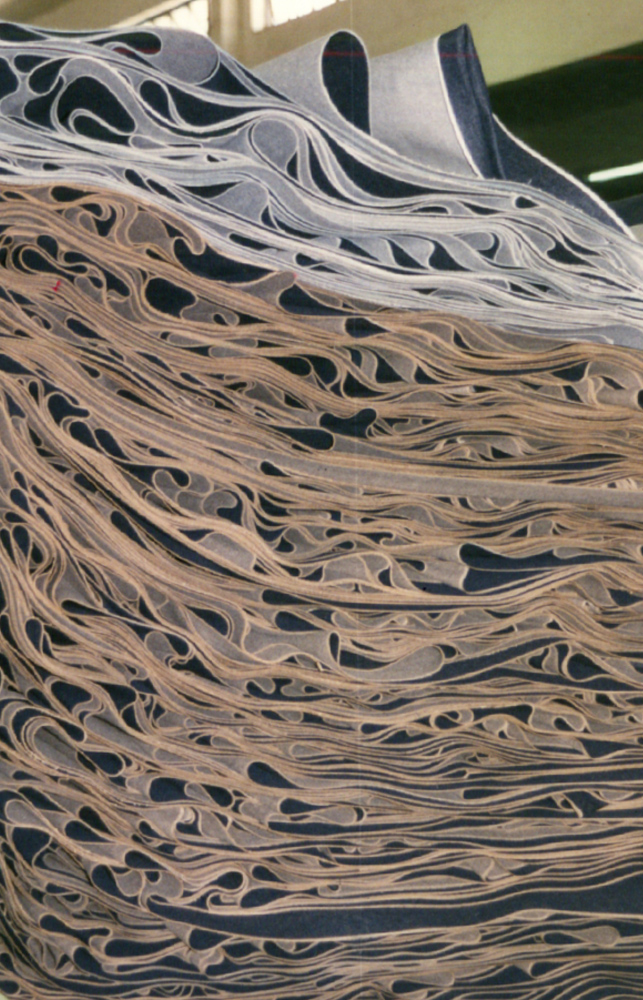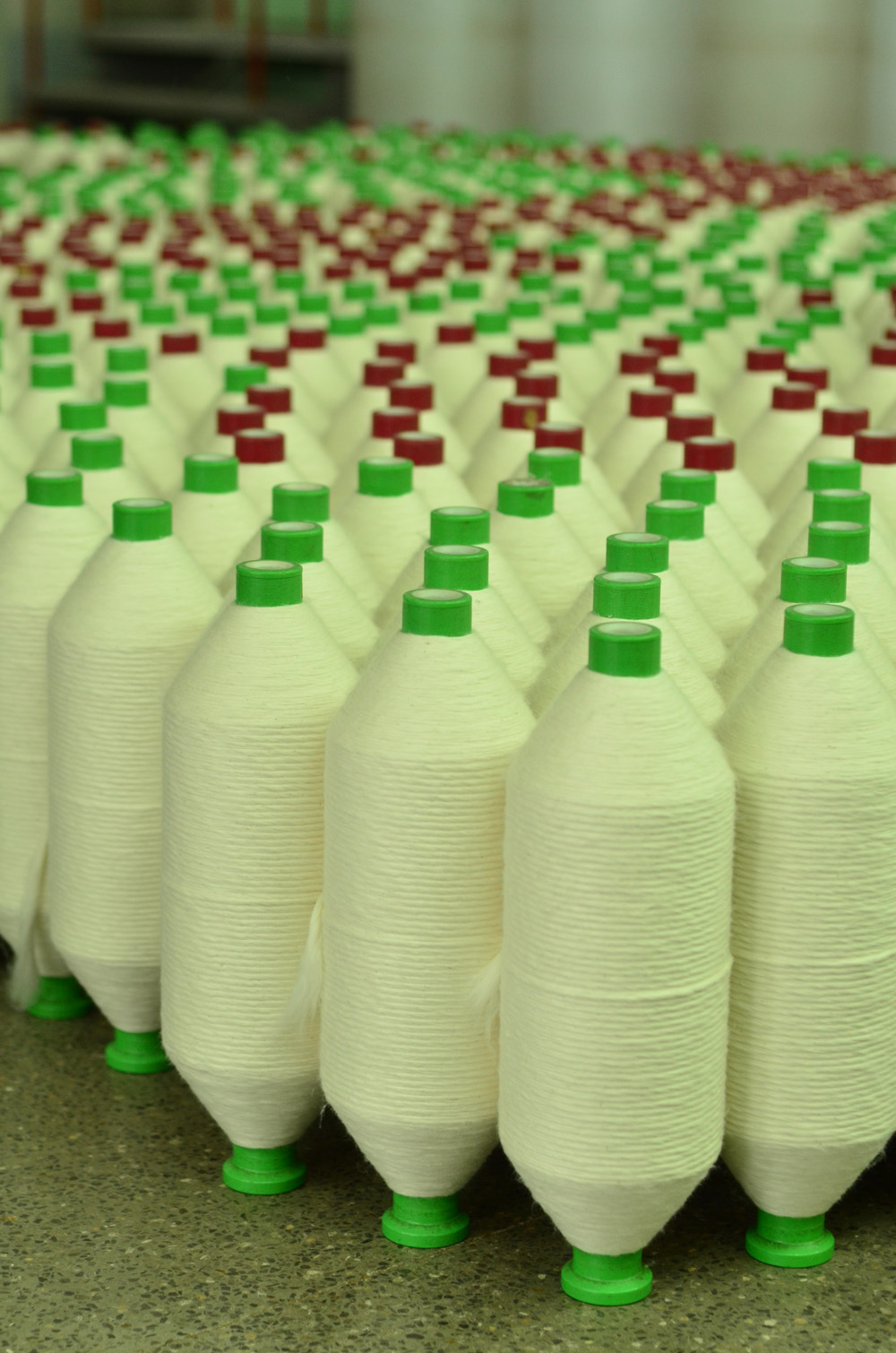Close ups of the stitching activity in the make of a jean. This is a short sewing line of a mere few but lines can be some 40 machines long. In Asia Pacific and The Far East both men and women operate the lines. In the more sophisticated factories every process is computerised to avoid any operator errors. Thereby guaranteeing every jean is exactly the same.
On the left we illustrate an industrial front loading washing machine and on the right two barrel washers. The jeans are loaded with different sizes of pumice stones depending on the level and type of stone wash effect and softness desired.
A completed load of dried jeans.
Below the unused pumice stones are scooped up for future use.
On the right a finishing operative is fitting a jean onto a blow up mannequin in preperation for the scraping and spraying process.
Trollies of some 100 Jeans are waiting to be "finished" - where the threads are cut; the accessories and sundries attached; and the jeans are pressed ready to be bagged.


